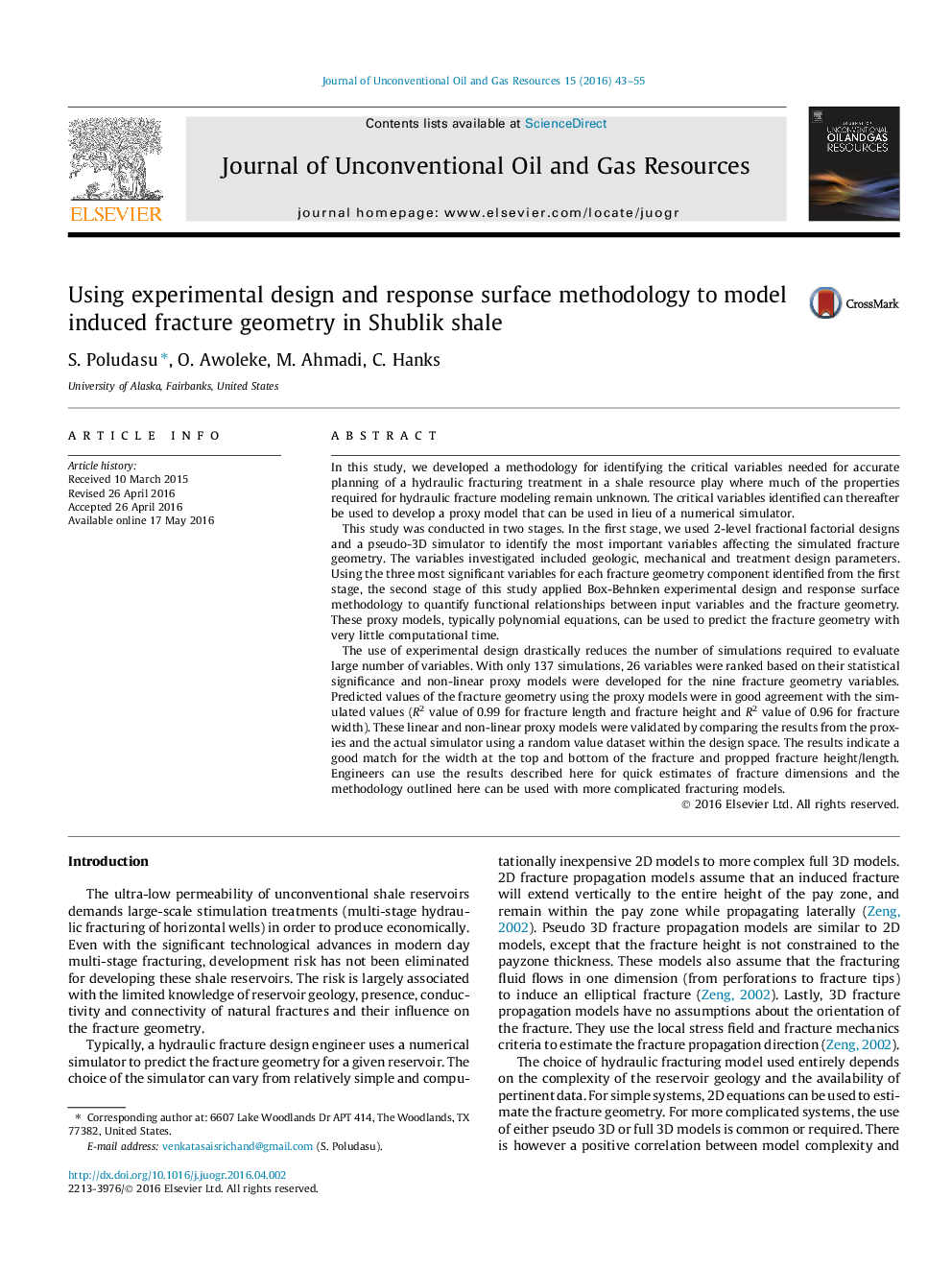| کد مقاله | کد نشریه | سال انتشار | مقاله انگلیسی | نسخه تمام متن |
|---|---|---|---|---|
| 1756644 | 1522947 | 2016 | 13 صفحه PDF | دانلود رایگان |
• Experimental design was used to develop a proxy for a numerical fracture simulator.
• 27 parameters were evaluated and significant factors affecting fracture geometry were identified.
• Box-Behnken design was used to develop the non-linear proxy models for 9 fracture geometry variables.
• Developed proxy models have good prediction accuracy (R2 greater than 0.9).
• These models were also validated by comparing the results from randomly generated dataset.
In this study, we developed a methodology for identifying the critical variables needed for accurate planning of a hydraulic fracturing treatment in a shale resource play where much of the properties required for hydraulic fracture modeling remain unknown. The critical variables identified can thereafter be used to develop a proxy model that can be used in lieu of a numerical simulator.This study was conducted in two stages. In the first stage, we used 2-level fractional factorial designs and a pseudo-3D simulator to identify the most important variables affecting the simulated fracture geometry. The variables investigated included geologic, mechanical and treatment design parameters. Using the three most significant variables for each fracture geometry component identified from the first stage, the second stage of this study applied Box-Behnken experimental design and response surface methodology to quantify functional relationships between input variables and the fracture geometry. These proxy models, typically polynomial equations, can be used to predict the fracture geometry with very little computational time.The use of experimental design drastically reduces the number of simulations required to evaluate large number of variables. With only 137 simulations, 26 variables were ranked based on their statistical significance and non-linear proxy models were developed for the nine fracture geometry variables. Predicted values of the fracture geometry using the proxy models were in good agreement with the simulated values (R2 value of 0.99 for fracture length and fracture height and R2 value of 0.96 for fracture width). These linear and non-linear proxy models were validated by comparing the results from the proxies and the actual simulator using a random value dataset within the design space. The results indicate a good match for the width at the top and bottom of the fracture and propped fracture height/length. Engineers can use the results described here for quick estimates of fracture dimensions and the methodology outlined here can be used with more complicated fracturing models.
Journal: Journal of Unconventional Oil and Gas Resources - Volume 15, September 2016, Pages 43–55
